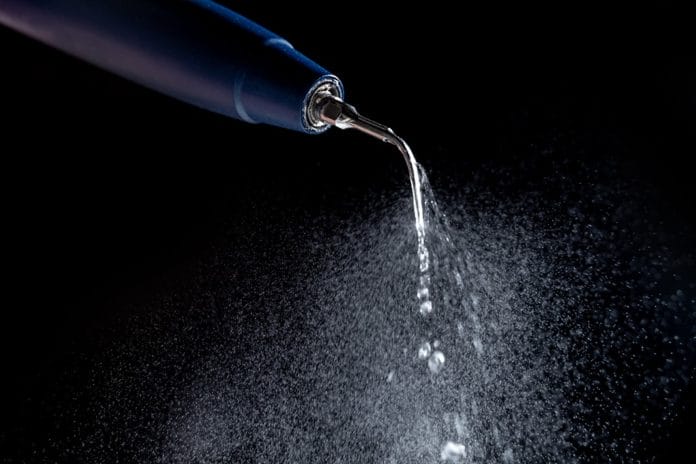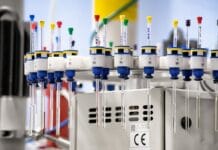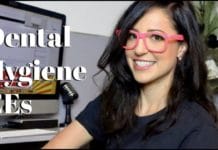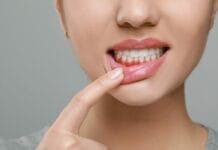Editor’s Note: Information about COVID-19 is changing on a daily, sometimes hourly, basis. We have made every attempt to ensure this article is up-to-date at the time of original article publication (June 28, 2020), but with the rapid changes occurring, some information may have changed since publication. Please visit coronavirus.
The worldwide spread of the novel coronavirus, SARS-CoV-2, has highlighted some issues in dentistry many have not considered in the past. Although the concern for these issues is not new, they seem to have been swept under the rug for many years. I would like to address one that should have been remedied years ago. If it had been addressed, we might not have needed to shut down for such an extended time. The issue I will be tackling in this article is ventilation and airborne pathogens.
The issue of ventilation in dental settings was a concern as far back as 1950. In a study published November 1970 in JADA, the authors expressed concern with the aerosols produced during ultrasonic scaling. The topics highlighted were microorganisms penetrating and depositing in the lower respiratory tract and surface contamination from aerosols settling on surfaces after ultrasonic scaling.
This study evaluated the efficacy of laminar airflow in the reduction of microorganisms in the air. Laminar airflow is when all the air is moving in the same direction at the same speed with minimal to no crossover of the air streams. They concluded that a 99.67% reduction of microorganisms disseminated into the environment during ultrasonic scaling with the use of laminar airflow.1
Current Studies on Aerosols and Ventilation
More recent research indicates much of the same that was reported 40 years ago. Dental instruments such as ultrasonic scalers and air/water syringes produce an abundance of bioaerosols. Current studies report the number of bioaerosols produced by these instruments is 10-fold higher than what was reported in earlier studies.2
Some dental professionals have voiced their opinion on the fact that we have been using standard precautions, and that alone should protect us. The truth is standard precautions were put in place for bloodborne pathogens, not airborne pathogens. Studies show dental healthcare workers are still at risk of aerosol inhalation even with standard precautions.
The performance of three different types of masks was studied – the tie-on surgical mask, fluid-resistant molded surgical mask, and the particulate respirator. The conditions of the study were a simulated dental setting with particulate matter ranging from 1 µm to 300 µm.
The results showed significant differences in the filtering abilities of each mask. The respirator filtered 94% to 96% of particulate matter, while the surgical masks performed at 85% to 92%. The study concluded that the respirator was more efficient at filtering particulate matter found in dental settings. This is an example of how the PPE we use under standard precautions may not be enough when we consider aerosols and particulate matter produced during dental procedures.3
Adequacy of HVE
Another suggested engineering control to reduce aerosols includes high-volume evacuator (HVE) systems. There are plenty of options to choose from, and many claim they are highly effective at removing aerosols and particulate matter. Plenty of evidence supports claims made regarding the reduction of particulate matter by using the HVE.4-6 The concern is, how effective is it if all the HVEs in the office are being used simultaneously?
I must concede this was just a concern discussed amongst fellow hygienists, and there seems to have been little to no research to address this concern. Therefore, I can’t provide evidence that this would actually be an issue. I would recommend, though, testing your HVE units while several are in use to better assess for yourself if you see a decrease in airflow and suction efficacy.
Although I believe the use of HVE is necessary regardless of airflow, hygienists should not get a false sense of security from the use of HVE alone. Another suggested method to reduce aerosols and particulate matter is the use of a rubber dam. Even though this could be beneficial for restorative procedures, I feel it is impractical for use during a hygiene appointment.
It should be noted that, to be classified as an HVE (ability to reduce aerosols, not just for moisture control), the bore size or opening on the tip must be 8 millimeters or greater.6 This larger bore size is needed to remove a large volume of air (up to 100 cubic feet of air per minute). Smaller bore sizes or openings, such as that of a saliva ejector, do not remove a large enough volume of air to be classified as an HVE.6
What about using the HVE and saliva ejector at the same time within an operatory? The Centers for Disease Control and Prevention (CDC) report that using an HVE and saliva ejector simultaneously may be a potential source of cross-contamination due to the risk of backflow.14 Specifically, the CDC states, “Backflow from low-volume saliva ejectors occurs when the pressure in the patient’s mouth is less than that in the evacuator. Studies have reported that backflow in low-volume suction lines can occur and microorganisms be present in the lines retracted into the patient’s mouth when a seal around the saliva ejector is created (e.g., by a patient closing lips around the tip of the ejector, creating a partial vacuum). This backflow can be a potential source of cross-contamination; occurrence is variable because the quality of the seal formed varies between patients. Furthermore, studies have demonstrated that gravity pulls fluid back toward the patient’s mouth whenever a length of the suction tubing holding the tip is positioned above the patient’s mouth, or during simultaneous use of other evacuation (high-volume) equipment.”14
Overall, we simply need more engineering controls to protect dental healthcare workers as well as patients. This topic has been ignored for far too long.
Indoor Air Quality
Bioaerosols can contaminate the indoor air quality of any facility. Bioaerosols are aerosols containing particles of any kind of microorganism. These aerosols can be generated by talking, coughing, sneezing, and breathing. Studies have shown, depending on the individual’s infectious status, bioaerosols can contain Mycobacterium tuberculosis, Staphylococcus aureus, Streptococcus spp., Aspergillus spp., varicella zoster virus, rubeola virus, and SARS-CoV-2.8,12,13
Due to the nature of dentistry and dental hygiene, the risk of acquiring pathogenic microorganisms through bioaerosols is higher than most workplaces. Not only does exposure to these bioaerosols cause diseases, but they are also associated with the onset of allergies.8
Additionally, airflow in the airway, as well as particulate matter size, may influence the particulate matter’s ability to reach the lungs. Brownian motion, which is the random movements of particles suspended in fluid that generally affects particles 2µm and smaller, this motion allows these smaller particles to reach the alveoli. Examples of Brownian motion that you can visualize include diffusion of pollutants in the air or movement of dust in a room. These particles become alveolar sediment and may pose a respiratory health risk.9
Significance of HEPA Filters Air Changes and Upper-Room Violet Germicidal Irradiation
Portable high-efficiency particulate air (HEPA) filtration units are an option to reduce aerosols and particulate matter. True HEPA filters remove at least 99.97% of pollen, dust, bacteria, mold, and other airborne particles with a size of 0.3 µm. If you are unsure if your office has a true HEPA filter or a different type, checking the minimum efficiency reporting values (MERV) rating can determine the level of filtration. The higher the MERV rating, the better the filtration. MERV ratings are usually found on the label of the air filter, therefore checking it is quite easy and can be done prior to purchasing the filter. The EPA has a chart that can help determine the size of particulate matter being filtered by MERV ratings.7
In addition to the MERV rating, the clean air delivery rate (CADR) will tell you the volume of air in cubic feet per minute (CFM) that is cleaned of particles of particular size. Much like the MERV rating, the higher the rating, the more efficient the product. I mention the MERV rating prior to the CADR rating because, without the MERV rating, the CADR is useless. The right unit and filtration can increase room turnover time without the need to adjust the HVAC system.10
Bioaerosols can remain in the air for up to 30 minutes. This time frame is subjective, depending on air change rates. You must know the number of air changes per hour to determine the time required for airborne contaminate removal.
Prior to the CDC’s update, they recommended a 15-minute wait time before disinfecting rooms. This is associated with the air change rate. The recommendation by the CDC was recently removed; however, you can use an equation to determine the wait time required for the decontamination of airborne pathogens by using the number of air changes per hour. The equation is t2-t1= – [In C2/C1)/(Q/V) x60, with t1=0. However, if you are like me and despise mathematical equations, you can view the breakdown via this chart.
The CDC has ventilation requirements for hospitals and outpatient facilities, yet dental offices are not listed. Therefore, I will use the guide for airborne infection isolation rooms as an example. In this area of the hospital, the requirements for ventilation include:
- Air movement must move in from adjacent areas.
- Minimum air changes of outdoor air per hour is two.
Minimum total air changes per hour is 12. - All air must be exhausted to outdoors.
- Air may not be recirculated by means of room units.
For comparison, the “toilet room” is required to have 10 air changes per hour. Considering dental offices have patients with different health histories, many of which are immune suppressed or compromised leaving them more susceptible to infections from bioaerosols, I would like to see an update for ventilation requirements by the CDC that includes dental offices.8,11
Conclusion
Ventilation and aerosols have long been a concern, even decades prior to the recent pandemic. If some of these protocols, such as HEPA filtration and proper wait time depending on the frequency of air changes were already in place, dentistry might not have needed to be shut down for such an extended time. Some other precautions may have been necessary in the face of the current pandemic. However, ventilation would not have been a concern.
I implore all hygienists to utilize their HVE as much as possible. It can be cumbersome. In which case, I would encourage you to explore other options such as systems for easier use. There are multiple products on the market to make using the HVE more comfortable and more ergonomically friendly. Again, base your decision on which HVE attachment(s) to use based on 8 millimeters or greater bore size for the most effective aerosol reduction.6
I hope the recent pandemic will encourage the CDC to apply requirements for ventilation for dental practices soon. Until then, please consider having an HVAC professional evaluate the number of air changes per hour, so each practice can implement the proper wait time to reduce exposure to bioaerosols for patients as well as employees. Additionally, adding an air purification system can lessen the wait time if it is unreasonable due to the number of air changes per hour of your office’s current HVAC system.
Now Listen to the Today’s RDH Dental Hygiene Podcast Below:
References
- Pollok, N.L. 3rd, Williams, G.H. 3rd, Shay, D.E., Barr CE. Laminar air purge of microorganisms in dental aerosols. J Am Dent Assoc. 1970; 81(5): 1131-1139. doi:10.14219/jada.archive.1970.0384. Retrieved from https://jada.ada.org/article/S0002-8177(70)15019-7/abstract.
- Dutil, S., Meriaux, A., de Latremoille, M.C., Lazure, L., Barbeau, J., Duchaine, C. Measurement of airborne bacteria and endotoxin generated during dental cleaning. J Occup Environ Hyg. 2009; 6(2): 121-130. doi:10.1080/15459620802633957. Retrieved from https://pubmed.ncbi.nlm.nih.gov/19093289/.
- Checchi, L., Montevecchi, M., Moreschi, A., Graziosi, F., Taddei, P., Violante, F.S. Efficacy of three face masks in preventing inhalation of airborne contaminants in dental practice. J Am Dent Assoc. 2005; 136(7): 877-882. doi:10.14219/jada.archive.2005.0288. Retrieved from https://pubmed.ncbi.nlm.nih.gov/16060468/.
- Day, C.J., Sandy, J.R., Ireland, A.J. Aerosols and splatter in dentistry–a neglected menace?. Dent Update. 2006; 33(10): 601-606. doi:10.12968/denu.2006.33.10.601. Retrieved from https://pubmed.ncbi.nlm.nih.gov/17209534/.
- Devker, N.R., Mohitey, J., Vibhute, A., et al. A study to evaluate and compare the efficacy of preprocedural mouthrinsing and high volume evacuator attachment alone and in combination in reducing the amount of viable aerosols produced during ultrasonic scaling procedure. J Contemp Dent Pract. 2012; 13(5): 681-689. Published 2012 Sep 1. doi:10.5005/jp-journals-10024-1209. Retrieved from https://pubmed.ncbi.nlm.nih.gov/23250175/.
- Harrel, S.K., Molinari, J. Aerosols and splatter in dentistry: a brief review of the literature and infection control implications. J Am Dent Assoc. 2004; 135(4): 429-437. doi:10.14219/jada.archive.2004.0207. Retrieved from https://pubmed.ncbi.nlm.nih.gov/15127864/.
- United States Environmental Protection Agency. Indoor Air Quality (IAQ). What is a MERV rating? Retrieved from https://www.epa.gov/indoor-air-quality-iaq/what-merv-rating-1.
- Zemouri, C., de Soet, H., Crielaard, W., Laheij, A. A scoping review on bio-aerosols in healthcare and the dental environment. PLoS One. 2017; 12(5): e0178007. Published 2017 May 22. doi:10.1371/journal.pone.0178007. Retrieved from https://www.ncbi.nlm.nih.gov/pmc/articles/PMC5439730/.
- Liu, M.H., Chen, C.T., Chuang, L.C., Lin, W.M., Wan, G.H. Removal efficiency of central vacuum system and protective masks to suspended particles from dental treatment. PLoS One. 2019; 14(11): e0225644. Published 2019 Nov 26. doi:10.1371/journal.pone.0225644. Retrieved from https://www.ncbi.nlm.nih.gov/pmc/articles/PMC6879156/.
- BulkFilter. Air Purifier Ratings – CADR, MERV, or MPR? What to trust? Retrieved from https://bulkfilter.com/airpurifierratings-cadr-merv-mpr/.
- Centers for Disease Control and Prevention. Infection Control. Appendix B. Air. Retrieved from https://www.cdc.gov/infectioncontrol/guidelines/environmental/appendix/air.html#tableb1.
- Yue, L. Ventilation in the Dental Clinic: An Effective Measure to Control Droplets and Aerosols during the Coronavirus Pandemic and Beyond. Chin J Dent Res. 2020; 23(2): 105-107. doi:10.3290/j.cjdr.a44746. Retrieved from https://pubmed.ncbi.nlm.nih.gov/32548601/.
- Agranovski, I.E., Safatov, A.S., Borodulin, A.I, et al. Inactivation of viruses in bubbling processes utilized for personal bioaerosol monitoring. Appl Environ Microbiol. 2004; 70(12): 6963-6967. doi:10.1128/AEM.70.12.6963-6967.2004. Retrieved from https://www.ncbi.nlm.nih.gov/pmc/articles/PMC535147/.
- Kohn, W.G., Collins, A.S., Cleveland, J.L., Harte, J.A., Eklund, K.J., Malvitz, D.M. Guidelines for Infection Control in Dental Health-Care Settings – 2003. Centers for Disease Control and Prevention. MMWR 2003; 52 (Report No. 17). Retrieved from http://www.cdc.gov/mmwr/PDF/rr/rr5217.pdf












